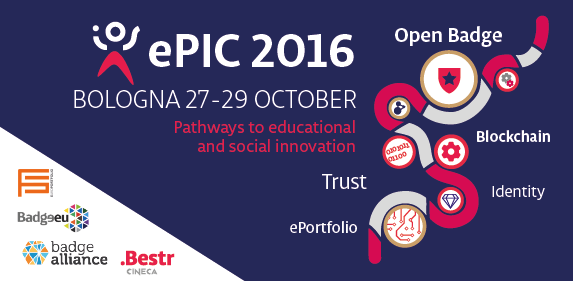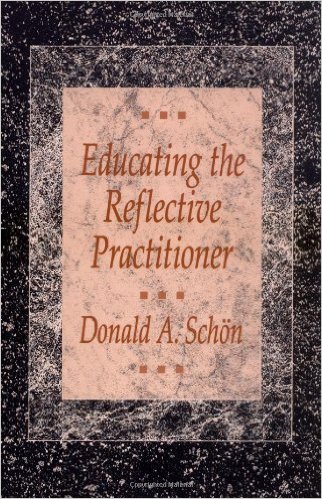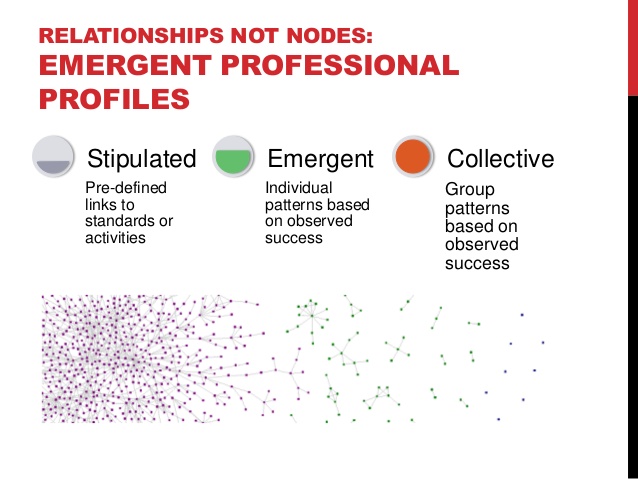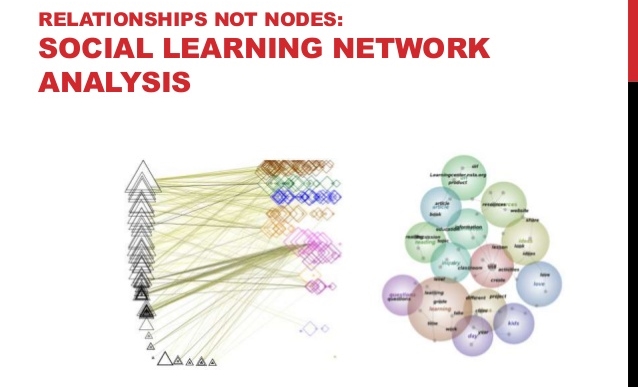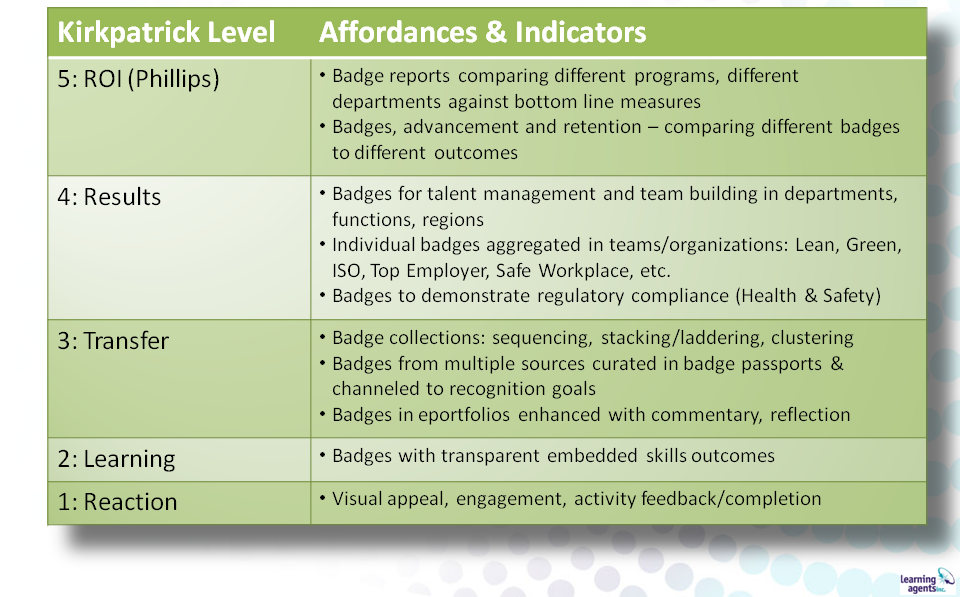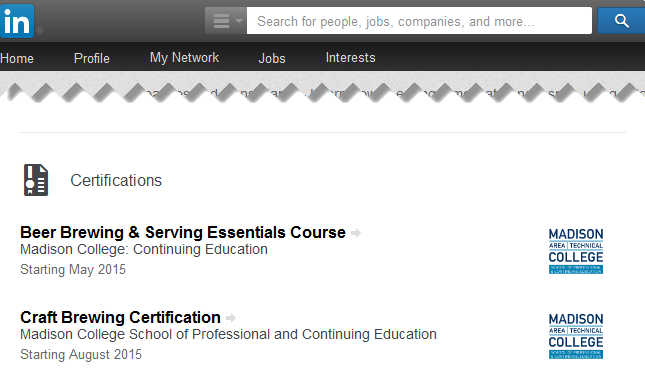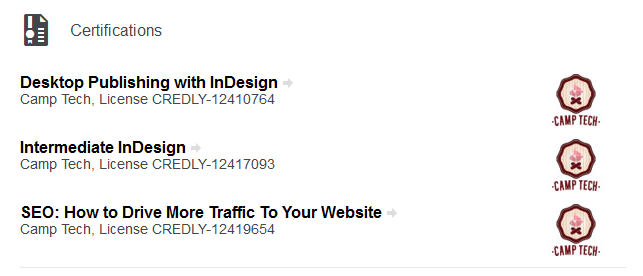Higher education institutions face a lot of financial challenges these days: declining enrolment in many programs, uncertain funding, rising costs, external competition, etc. So I thought it made sense to explore business reasons to implement Open Badges.
There’s been a lot written about how Open Badges and Digital (i.e. not Open) Badges can transform teaching and learning, but that just adds them to the end of a very long list. What if Open Badges:
- Were revenue positive?
- Helped clearly demonstrate the value of a higher education and enabled its transfer into the workplace?
- Became a common currency for collaboration between institutions and employers?
- Helped show and even accelerated the innovative impact that an institution makes on its surrounding community?
That would transform Open Badge eCredentials from just another distraction or expense into a possible game changer.
Part 1 last week dealt with pathways INTO higher education. In Part 2, I’m going to explore pathways OUT OF higher education – and back in again. And out, and in…
Making that sheepskin “smarter” and more useful
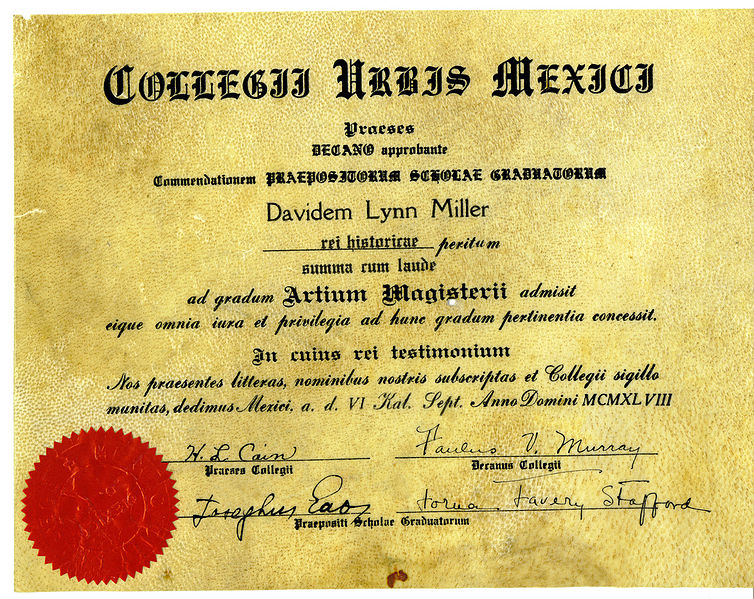
Millermz at English Wikipedia CC BY-SA 3.0
If it were just about digitizing degrees and transcripts for easier sharing , then services such as Parchment and Digitary would have it solved already, maybe with a bit of help from high level degree evaluators such as World Education Services, who can tell you for example whether a BA from another country is worth the same as one in Canada (in addition to telling you if the documentation is forged or if the institution is bogus.)
But what does a degree really tell you? According to a recently published, well-researched and cogent (unfortunately pay-walled) article in The Information Society by Carla Casilli and Dan Hickey, it’s a “long-standing social shorthand” based on a tacit set of trust networks which are not “typically, nor even frequently, tested, investigated or held accountable”. They go on to say that the PSE system has responded by introducing standards for academic content, PD and teaching practices but “there is little in academic degrees themselves that can be used to judge the quality of the learning or of the preparation level” (although I would argue that degree frameworks in many countries outside North America such as EQF, SCQF and AQF do speak to the “preparation level” part at a high level.) In any case, they say, and I agree that “the process of evaluating traditional educational credentials remains murky.” Love that word.
For these reasons, as this teachonline.ca article from Contact North says:
…. many significant employers now look less at what the credential is and look more carefully at what an individual can actually do. To help them assess this, more and more employers are looking to proofs of work-based learning, badges, evidence from learner portfolios of projects completed and other forms of evidence of knowledge, skills and competency.
Contact North describes a couple of official responses to this: the UK’s Higher Education Achievement Report and the Post-Secondary Achievement Report in the US.”Both of these developments are in their infancy.”
Not even born yet, but very interesting is IMS Global’s Open Badge Extensions for Education (OBEE) initiative, linked to their efforts to enable Competency Based Education (CBE). According to Mark Leuba, VP Product Management in a recent WCET presentation, this is part of a vision to take student records “out of the lockbox” and provide evidence of “discrete, “pre-degree” attainment” as “individual and bundled units of learning” that are secure, shareable and portable.
This is part of a wider strategy by IMS Global:
- Open Badge efforts will continue to expand, i.e.
- For-credit, co-curricular, continuing education units, faculty professional development
- There will be an increased focus on the rigor and meaning of digital badges for academic institution
- IMS-led working group on Open Badge Extensions for Education (OBEE)
- Compliance certification
- In the future there will be convergence of open technical standards for badges, e-transcripts and secure, portable learner records.
Reading this both excites and scares me. If it works it could be great, but it’s very ambitious and could bog down or lead to unworkably complex standards. It’s also a bit top-down. I suspect that my colleague Serge Ravet would say that it doesn’t speak to more symmetrical recognition scenarios (peer-peer, self-assessment, emergent issuers, etc.) and instead perpetuates the current power structure. But hey, I’m speaking here to a higher education audience, so that’s OK.
I do hope they remember the part about “small pieces, loosely connected.” Thankfully, Badge Alliance ED Nate Otto and other friendlies are involved. If you’re interested, the working group has split into four Taskforces (Specifications, Analytics, Discoverability, Compliance) and is in the first of three 90-day sprints. I suggest contacting @MarkLeuba directly if you would like to be invited to participate. You should also know that WCET is following up with a summit in June:21st Century Credentials: Learners + Institutions + Workforce. Looks interesting.
In the meantime, we soldiers push forward in the trenches. I just just completed a Train the Trainer engagement at a local college for a Mahara ePortfolio solution to support a Business Technology Management program seeking national accreditation. I was working with faculty and support staff to leverage the affordances of Mahara to enable students to map evidence of their learning to Program Learning Outcomes. Basically, exploring different ways to curate and align artefacts and to connect and integrate them with genuine reflection. And how to get task and grade oriented students to engage with all that. Tools and resources we used included AAC&U’s VALUE rubrics and Serge Ravet’s ePortfolio and Open Badges Maturity Matrix.
I suggested to them that Mahara + Open Badges would be a potent combination. Mahara has an Open Badges displayer, and you can start building ePortfolio/Open Badge hybrid pages that can leverage each other’s strengths, such as badges + additional evidence for a higher level badge, ongoing currency via reflection and new evidence, etc.
The point is that that Open Badges help you harden those soft skills that are diffused across ePortfolios and present them in more packaged, digestible proxies that can be drilled into if necessary. Employers want to see authentic evidence of those skills, but they don’t want to have to sift through the evidence like archaeologists.
I am a little disturbed by one development this week in Ontario: the Higher Education Quality Council of Ontario (HEQCO) wants to introduce “soft skills” testing for students entering AND leaving Ontario PSE institutions. According to the story in the Hamilton Spectator, HEQCO is seeking participants for a pilot that could roll out province-wide. The test, based on PIAAC, assesses literacy, numeracy and “problem solving in technology rich environments”.
“We don’t want to test because we’re interested in ranking institutions. But students spend time and money on post-secondary education, and the public invests in it, so we need to know if students are acquiring the skills that are going to serve them well,” said (Harvey) Weingarten, (president of HEQCO) former president of the University of Calgary. “If we’re not doing as well as we’d like, then we need to do a better job.”
I have a lot of questions about this, some of which I raised on the STLHE mailing list and also on Carolyn Hoessler’s blog. I hope to find out more at HEQCO’s Transitions conference in a few weeks. I see that Contact North and some others interested in different forms of assessment for a broader range of skills are represented at the conference, so that’s a good thing.
Literacy and numeracy are necessary but not sufficient. How can you help your graduates demonstrate to employers that they have the stuff that will make their organizations live long and prosper?
For example, I suggest that Canadian liberal arts programs who are struggling to demonstrate the value of what they have to offer in the face of declining enrolment may want to have a look at what Deakin and Notre Dame are doing, inspired in part by AAC&U. (See more detail in a previous post in this blog.)
“Sticky alumni”, nano-degrees, community ecosystems

Sean Shapiro CC BY-SA 3.0
According to Grammarist, alma mater means “generous or bountiful mother”. But what happens when Mom changes the locks?
When students graduate from colleges and universities, they often lose the connection with their alma maters. I know I did. Granted, progressive institutions do provide some declining career support after graduation and even some continuing services, such as lifelong portfolios. And then, of course, once they start making some real coin, alumni organizations start hitting them up for money, perhaps to feed Mom’s construction habit.
But I don’t see much evidence of a strategic approach to what I would call “sticky” alumni: institutions deliberately maintaining mutually beneficial lifelong relationships with their graduates that evolve in character over the career of the graduate, which could play out in the following rough sequence:
- Career placement & counseling for the student
- Continuing education and CPD student
- Mid-career graduate student, including recognition and accreditation of professional practice (a la DeakinDigital)
- Program advisory committee member
- Community resource, guest speaker, adjunct instructor
- Workplace placement partner
- Research and innovation partner
- Alumni donor
One size doesn’t fit all, but you get the idea. Graduating students are a great place to start, but this could also be part of a strategy to increase engagement by mid-career adults previously unconnected with your institution. Open Badges can provide the skills and recognition currency to make this happen. Open Badges are increasingly discoverable over networks. LinkedIn profiles are just the start. Let’s start thinking about Lifelong Learning Analytics.
We’re already starting to see fragments of this emerging:
- University of Chicago Alumni Association badges
- DeakinDigital‘s Recognition of Professional Practice badges
Credentials that prove professional capabilities and grow careers in smart organisations - George Brown College’s Excellence in Research & Innovation badge
- Udacity nano-degrees and Coursera verified certifications in the private sector
- Open Badges in Education (OBIE2015)
From Learning Evidence to Learning Analytics
Again, according to Contact North:
Student Demand WILL CONTINUE TO GROW AND CHANGE
More students seeking shorter programs, which are skill-based and work-ready means the demand for micro-credit, nano-degrees and badges, will grow. This is already occurring, with colleges and private providers partnering with firms, professions and industry associations to develop competency assessments which can be used irrespective of whether or not the person being assessed has studied formal programs or courses: it will be skills that matter.
The ecosystem part starts to kick in in these examples:
BCcampus’ 2015 white paper: Competency to Credential:
Competency to Credential was initially conceived through a challenge-driven innovation and iterative design process for the delivery of new “horizontal” competency profiles resulting from changing health care strategies across several “vertical” health care professions (across BC.)
IBM’s Innovation and Growth badges
IBM sees Open Badges as a strategic tool to attract talent and drive innovation, partly in partnership with academic institutions. Here’s a rough transcription from a recent Badge Alliance Community Call :
“We have a real talent problem, so we’re trying to create that talent pipeline… we’re to figure out how to create lifelong learner journeys where we can say “What’s our K-12 strategy?”…and start to get people interested in robotics when they’re kids..how do we progress people through 13 years old to 18 year old kids? And then we have (higher education) academic initiatives, the Code Schools… ..college credentials and then how do we speak that same language..in the corporate space. How do we figure out that real progression plan? Honestly, I think that Badges is the perfect common language to connect all those things together.”
David Leaser, Senior Program Manager, Innovation and Growth Initiatives at IBM
Small wonder that Alan Davis, President and Vice-Chancellor at Kwantlen Polytechnic University said in a recent email communication, linking Open Badges to Open Educational Practices:
We see Open Badge eCredentials as a key building block to help us achieve the goals of our Academic Plan. Open Badges can map learning pathways that connect theory to practice. Open Badges can also connect our students to our community as they work with local industries, solving real world problems and driving innovation in our region.
Hmm… what if Open Badges were smart nodes in open networks, a bit like the internet itself?

By the OPTE Project – Originally from the English Wikipedia CC BY 2.5
And my point is…
If we stop thinking about Open Badges and Digital Badges as just another way to engage students inside courses and start thinking about their potential as:
- smart modular knowledge objects that can be shared across information systems and social networks, based on a common standard;
- granular evidence of learning outcomes and external impact;
- digital beacons for branding institutions and marketing courses and programs;
- communication tools for knowledge transfer and emergent innovation;
… then we have something that can make a serious impact on a higher education institution’s mission AND bottom line… don’tcha think?
CINECA seems to think so. It’s a non profit consortium, made up of 70 Italian universities, four Italian Research Institutions and the Italian Ministry of Education.
That’s why it’s developed Bestr,an Open Badge platform to “valorize competencies and connect them with companies, universities and training institutions”
That’s why it’s co-hosting the ePortfolio and Identity Conference (ePIC 2016) this year in Bologna with conference founder, Serge Ravet of ADPIOS:
Join us!


